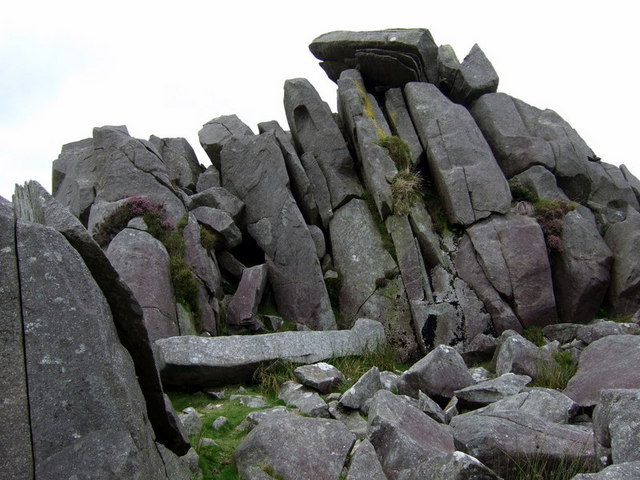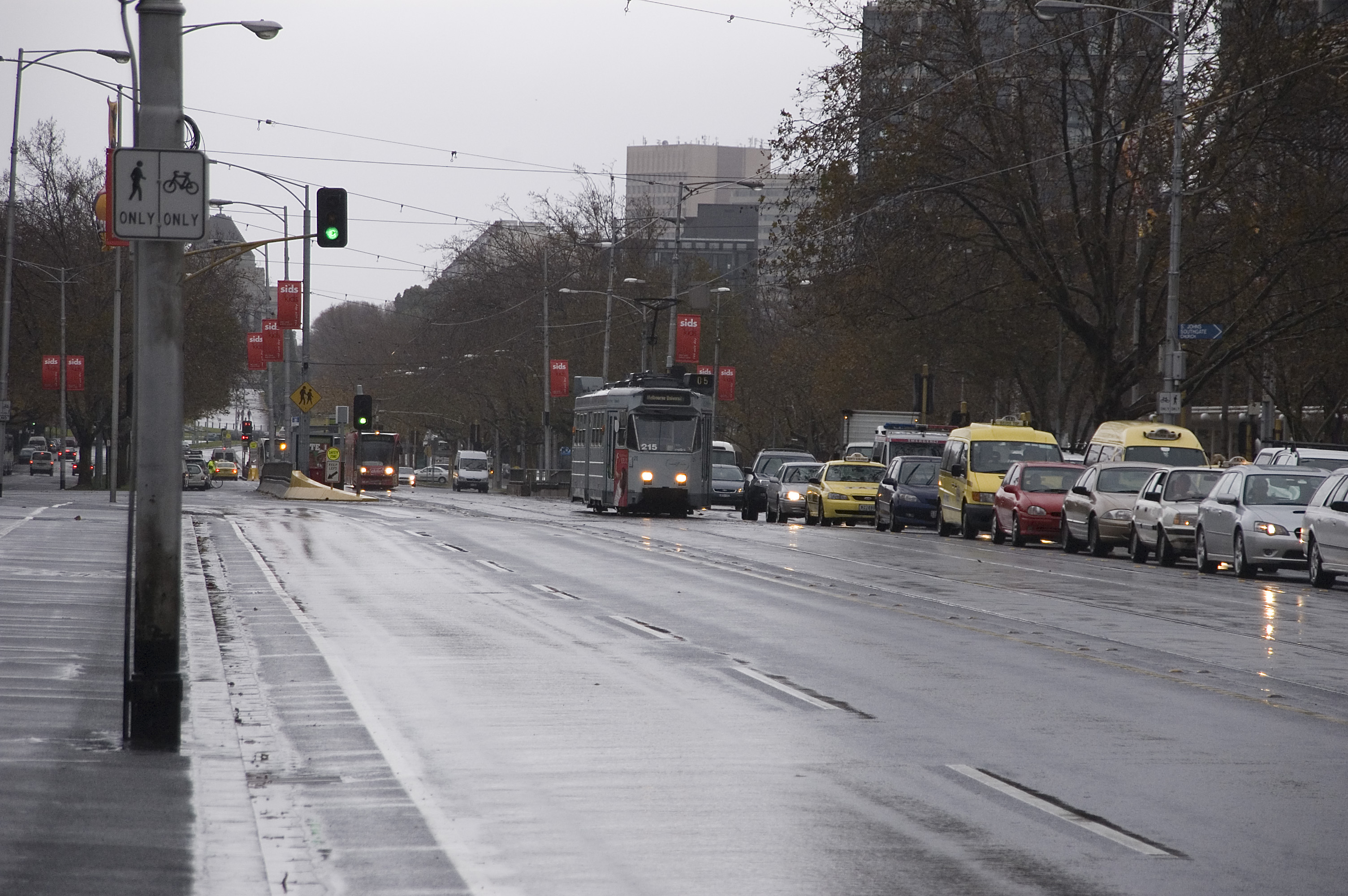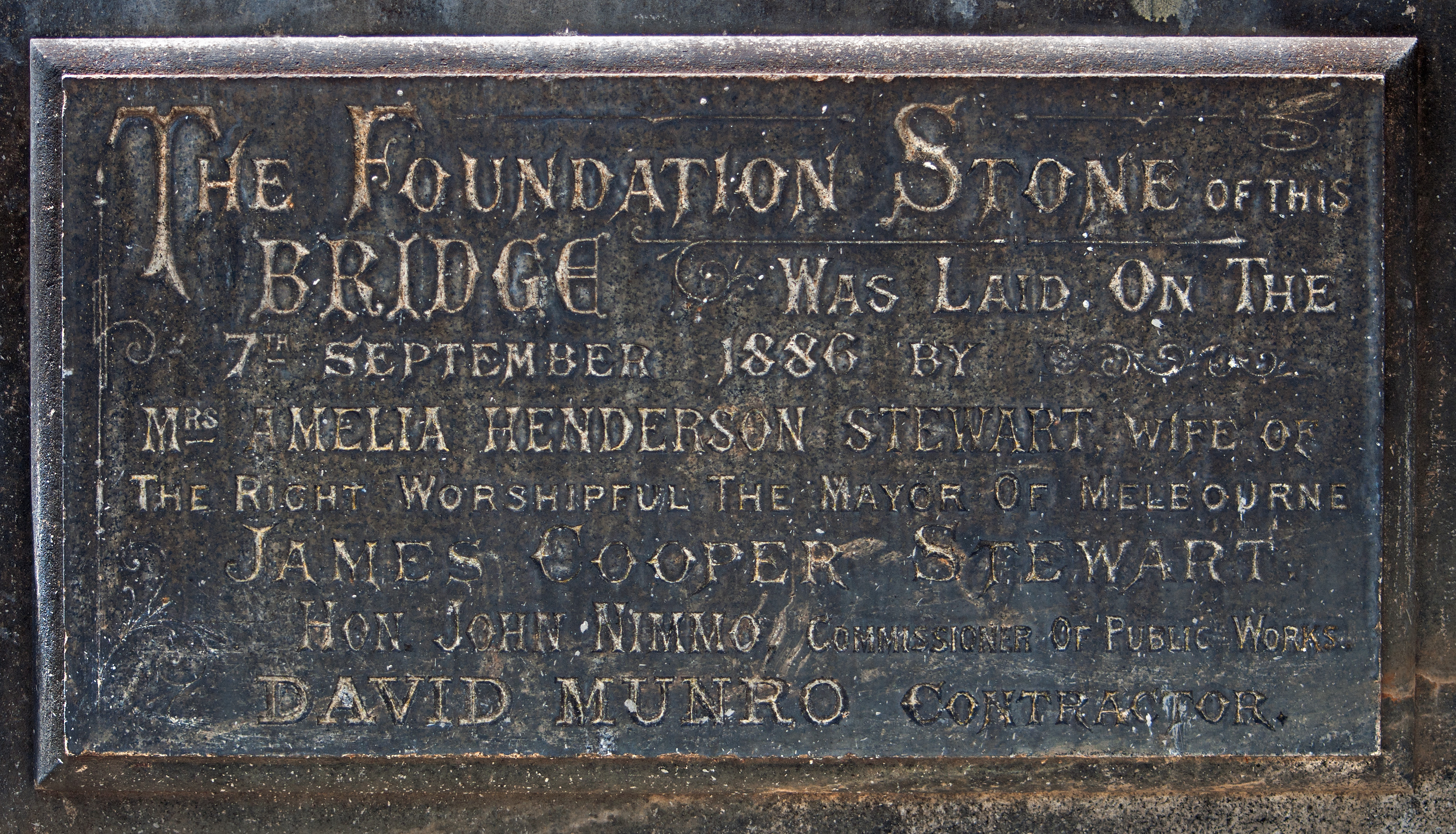|
St Paul's Cathedral, Melbourne
St Paul's Cathedral is an Anglican cathedral in Melbourne, Australia. It is the cathedral church of the Diocese of Melbourne and the seat of the Archbishop of Melbourne, who is also the metropolitan archbishop of the Province of Victoria. The cathedral was designed by the English Gothic Revival architect William Butterfield and completed in 1891, except for the spires which were built to a different design from 1926 to 1932. It is one of Melbourne's major architectural landmarks. Location St Paul's Cathedral is in a prominent location at the centre of Melbourne, on the eastern corner of Swanston and Flinders streets. It is situated diagonally opposite Flinders Street station, which was the hub of 19th-century Melbourne and remains an important transport centre. Immediately to the south of the cathedral, across Flinders Street, is the new public heart of Melbourne, Federation Square. Continuing south down Swanston Street is Princes Bridge, which crosses the Yarra Riv ... [...More Info...] [...Related Items...] OR: [Wikipedia] [Google] [Baidu] |
Melbourne Central Business District
The Melbourne central business district (colloquially known as "the City" or "the CBD", and gazetted simply as Melbourne) is the city centre of Melbourne, Victoria, Australia. As of the 2021 census, the CBD had a population of 54,941, and is located primarily within the local government area City of Melbourne, with some parts located in the City of Port Phillip. The central business district is centred on the Hoddle Grid, the oldest part of the city laid out in 1837. It also includes parts of the parallel and perpendicular streets to the north, bounded by Victoria Street and Peel Street; and extends south-east along much of the area immediately surrounding St Kilda Road. The CBD is the core of Greater Melbourne's metropolitan area, and is a major financial centre in Australia and the Asia-Pacific region. It is home to several major attractions in Melbourne, including many of the city's famed lanes and arcades, the distinct blend of contemporary and Victorian architec ... [...More Info...] [...Related Items...] OR: [Wikipedia] [Google] [Baidu] |
Architecture Of Melbourne
The architecture of Melbourne, Victoria, and Australia is characterised by a wide variety of styles. The city is particularly noted for its mix of Victorian architecture and contemporary buildings, with 74 skyscrapers (buildings 150 metres or taller) in the city centre, the most of any city in the Southern Hemisphere. In the wake of the 1850s Victoria gold rush, Melbourne entered a lengthy boom period that culminated in the real-estate bubble of the 1880s and early 1890s. This saw the construction of a large amount of ornate, High Victorian Boom style buildings in the city centre. Melbourne's skyline subsequently transformed, becoming the first early skyscraper city outside the United States; architectural historian Miles Lewis describes Melbourne of the period as a " Queen Anne Chicago". Melbourne at this time was also second only to London as the largest and wealthiest city in the British Empire, and earned the still-quoted moniker "Marvellous Melbourne", coined by En ... [...More Info...] [...Related Items...] OR: [Wikipedia] [Google] [Baidu] |
St James Old Cathedral
St James Old Cathedral, an Anglican church, is the oldest church in Melbourne, Australia, albeit not on its original site. It is one of the relatively few buildings in the central city which predate the Victorian gold rush of 1851. The building was dismantled and relocated in 1914 to a corner site of King Street and Batman Street in West Melbourne. The parish is led by the Reverend Canon Matthew Williams. The Senior Associate Minister is the Reverend Mike Raiter, who is also director of the Centre for Biblical Preaching. The Assistant Curate is The Reverend Jessica Naylor-Tatterson. More recently, the church has begun serving as the chapel for Haileybury College's City Campus. The building is listed on the Victorian Heritage Register. History Melbourne's first substantial church was the 'Pioneer Church', a simple wooden structure used for both Anglican and Presbyterian services and as a school, which stood on the corner of William and Little Collins streets. The foundati ... [...More Info...] [...Related Items...] OR: [Wikipedia] [Google] [Baidu] |
Samuel Thomas Gill
Samuel Thomas Gill (21 May 1818 – 27 October 1880), also known by his signature S.T.G., was an English-born Australian artist. Early life Gill was born in Periton, Minehead, Somerset, England, in 1818. He was the son of the Reverend Samuel Gill, a Baptist minister, and his first wife, Winifred Oke. Rev. Gill became the headmaster of a school in Plymouth, where the son was first educated, then he continued to Dr Seabrook's Academy, Plymouth. Having moved to London, Gill appears to have exhibited his watercolours and worked as a draftsman at the Hubbard Public Gallery in London. Australia ] On 17 December 1839 Samuel Thomas Gill (or S.T. Gill) and his family arrived in Adelaide aboard the ''Caroline''. His father Samuel Gill (snr.) settled at the Coromandel Valley where he became the postmaster and opened a "Classical and Mathematical Preparatory School" for boys under twelve. His son S. T. Gill opened rooms at Gawler Place, Adelaide where he advertised portrait work and loca ... [...More Info...] [...Related Items...] OR: [Wikipedia] [Google] [Baidu] |
Bluestone
Bluestone is a cultural or commercial name for a number of natural dimension stone, dimension or building stone varieties, including: * basalt in Victoria (Australia), Victoria, Australia, and in New Zealand * diabase, dolerites in Tasmania, Australia; and in Britain (including Stonehenge) * feldspar, feldspathic sandstone in the US and Canada * limestone in the Shenandoah Valley in the US, from the Hainaut (province), Hainaut quarries in Soignies, Belgium, and from quarries in County Carlow, County Galway and County Kilkenny in Ireland * slate in South Australia It is unrelated to human-made blue brick. Stonehenge The term "bluestone" in Britain is used in a loose sense to cover all of the "foreign", not intrinsic, stones and rock debris at Stonehenge. It is a "convenience" label rather than a geological term, since at least 46 different rock types are represented. One of the most common rocks in the assemblage is known as Preseli spotted dolerite—a chemically altered i ... [...More Info...] [...Related Items...] OR: [Wikipedia] [Google] [Baidu] |
Parish Church
A parish church (or parochial church) in Christianity is the Church (building), church which acts as the religious centre of a parish. In many parts of the world, especially in rural areas, the parish church may play a significant role in community activities, often allowing its premises to be used for non-religious community events. The Church architecture, church building reflects this status, and there is considerable variety in the size and style of parish churches. Many villages in Europe have churches that date back to the Middle Ages, but all periods of architecture are represented. Catholic Church Each diocese (administrative unit, headed by a bishop) is divided into parishes. Normally, a parish consists of all Catholics living within its geographically defined area. Within a diocese, there can also be overlapping parishes for Catholics belonging to a particular rite, language, nationality, or community. Each parish has its own central church called the parish church, ... [...More Info...] [...Related Items...] OR: [Wikipedia] [Google] [Baidu] |
Paul The Apostle
Paul, also named Saul of Tarsus, commonly known as Paul the Apostle and Saint Paul, was a Apostles in the New Testament, Christian apostle ( AD) who spread the Ministry of Jesus, teachings of Jesus in the Christianity in the 1st century, first-century world. For his contributions towards the New Testament, he is generally regarded as one of the most important figures of the Apostolic Age, and he also founded Early centers of Christianity, several Christian communities in Asia Minor and Europe from the mid-40s to the mid-50s AD. The main source of information on Paul's life and works is the Acts of the Apostles in the New Testament. Approximately half of its content documents his travels, preaching and miracles. Paul was not one of the Twelve Apostles, and did not know Jesus during his lifetime. According to the Acts, Paul lived as a Pharisees, Pharisee and participated in the Persecution of Christians in the Roman Empire, persecution of early Disciple (Christianity), disciples ... [...More Info...] [...Related Items...] OR: [Wikipedia] [Google] [Baidu] |
Corn Exchange
A corn exchange is a building where merchants trade grains. The word "corn" in British English denotes all cereal grains, such as wheat and barley; in the United States these buildings were called grain exchanges. Such trade was common in towns and cities across the British Isles until the 19th century, but as the trade became centralised in the 20th century many such buildings were used for other purposes. Several have since become historical landmarks. In the United States, the Minneapolis Grain Exchange is still used to manage the Commodities exchange, commodities and futures exchange of grain products. History in England Corn exchanges were initially held as open markets normally controlled by the town or city authorities. Dedicated corn exchanges start appearing in the earlier part of the 18th century, increasing greatly following the repeal of the Corn Laws in 1846. They declined after the Great Depression of British Agriculture in the late 19th century. List of corn exc ... [...More Info...] [...Related Items...] OR: [Wikipedia] [Google] [Baidu] |
St Kilda Road
St Kilda Road is a street in Melbourne, Victoria, Australia. It is part of the Melbourne central business district, locality of Melbourne which has the postcode of 3004, and along with Swanston Street forms a major spine of the city. St Kilda Road begins at Princes Bridge, which spans the Yarra River and connects the central business district of Melbourne with the suburb of St Kilda, Victoria, St Kilda, ending at Carlisle Street, St Kilda. The road continues as Brighton Road, which becomes the Nepean Highway, forming a major arterial connecting the bayside suburbs and Mornington Peninsula to the city. The east side of the road to High Street, Prahran is in the municipality of the City of Melbourne while the west side of the road from Dorcas Street, and the east side south of High Street, is in the municipality of the City of Port Phillip. The road was the location of many institutions dotted along its length, and was famed for being lined with elegant mansions until the middle ... [...More Info...] [...Related Items...] OR: [Wikipedia] [Google] [Baidu] |
Yarra River
The Yarra River or historically, the Yarra Yarra River, (Kulin languages: ''Berrern'', ''Birr-arrung'', ''Bay-ray-rung'', ''Birarang'', ''Birrarung'', and ''Wongete'') is a perennial river in south-central Victoria, Australia. The lower stretches of the Yarra are where Victoria's state capital Melbourne was established in 1835, and today metropolitan Greater Melbourne dominates and influences the landscape of its lower reaches. From its source in the Yarra Ranges, it flows west through the Yarra Valley which opens out into plains as it winds its way through Greater Melbourne before emptying into Hobsons Bay in northernmost Port Phillip Bay. The river has been a major food source and meeting place for Indigenous Australians for thousands of years. Shortly after the arrival of European settlers, land clearing forced the remaining Wurundjeri people into neighbouring territories and away from the river. Originally called ''Birrarung'' by the Wurundjeri, the current name w ... [...More Info...] [...Related Items...] OR: [Wikipedia] [Google] [Baidu] |
Princes Bridge
Princes Bridge, originally Prince's Bridge,, ''...he wished that it might be distinguished by the name of "Prince's Bridge," in honour of the Prince of Wales, whom he hoped would yet be the Sovereign of their colonies...'' is a bridge in central Melbourne, Australia that spans the Yarra River. It is built on the site of one of the oldest river crossings in the city, and forms a gateway into the central city from the south. The bridge connects Swanston Street on the north bank of the Yarra River to St Kilda Road on the south bank, and carries road, tram and pedestrian traffic. The present bridge was built in 1888 and is listed on the Victorian Heritage Register. Because of its position, Princes Bridge is often a focal point for celebratory events in Melbourne such as the Moomba Festival, New Year's Eve and many celebrations taking place on the Yarra River where it flows through the city. History First bridge When the first European settlers settled in Melbourne in 1835, ther ... [...More Info...] [...Related Items...] OR: [Wikipedia] [Google] [Baidu] |
Federation Square
Federation Square (marketed and colloquially known as Fed Square) is a venue for arts, culture and public events on the edge of the Melbourne central business district. It covers an area of at the intersection of Flinders and Swanston Streets built above busy railway lines and across the road from Flinders Street station. It incorporates major cultural institutions such as the Ian Potter Centre, Australian Centre for the Moving Image (ACMI) and the Koorie Heritage Trust as well as cafes and bars in a series of buildings centred around a large paved square, and a glass walled atrium. History Background Melbourne's central city grid was originally designed without a central public square, long seen as a missing element. From the 1920s there were proposals to roof the railway yards on the southeast corner of Flinders and Swanston Streets for a public square, with more detailed proposals prepared in the 1950s and 1960s. In the 1960s, the Melbourne City Council decided that ... [...More Info...] [...Related Items...] OR: [Wikipedia] [Google] [Baidu] |








